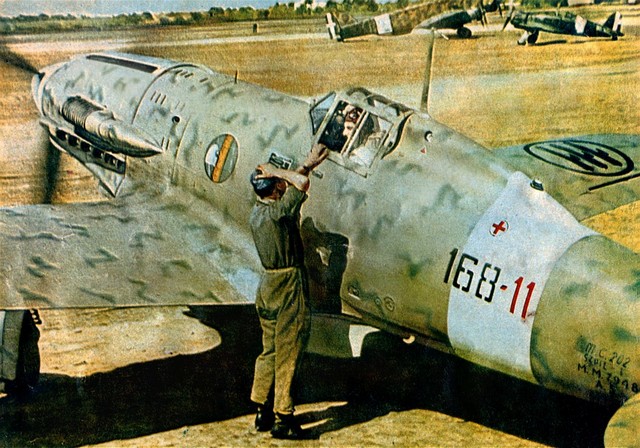When thinking of Italy and the Italian armed forces of WWII, a couple of images readily come to mind: a blustering buffoon of a leader, and the mass surrender in the desert of poorly led and unmotivated troops.
Similarly, a few planes readily come to mind when thinking of the fighter planes of WWII: the Zero, the Mustang, the Bf-109, the Spitfire…the list goes on. Usually not on that list is the Italian C.205 Veltro (“Greyhound”).
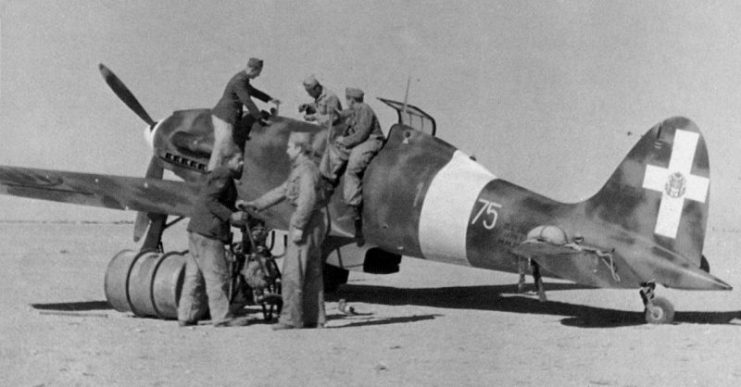
This fighter, an outgrowth of the earlier C.202 Folgore (“Thunderbolt”), was fast, well-designed, and good enough that admiring German pilots formed a squadron with them.
The plane was built by the company Aeronautica Macchi, which had been building planes since before WWI, and which built planes on its own and with the French company Nieuport during WWI. Most of these planes were reconnaissance and reconnaissance float-planes built for the Italian Navy, but a small number also filled fighter roles.
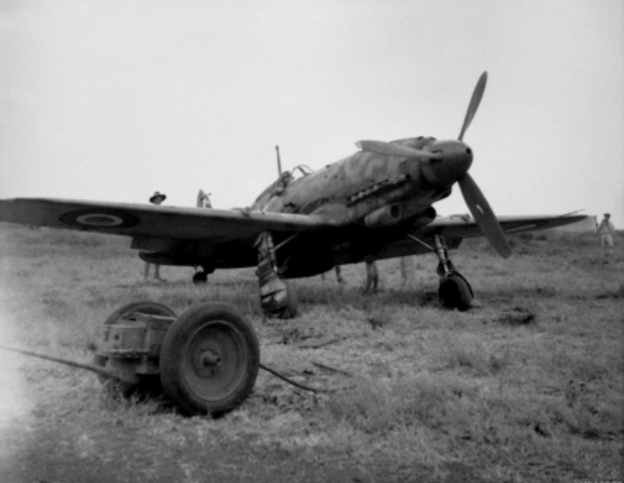
The “C” class of Macchi planes was designated as such due to the practice of placing the initial of the designer before the planes’ designation. Both the C.202 and the 205 were direct descendants of the C.200 Saetta (“Lightning”) which had been designed and produced in the years before the war.
Though effective against foes such as the Ethiopians–who had no air power whatsoever–the Greeks, and the Spanish during their Civil War, the Saetta was out of date by the time WWII proper began.
One of the ways to recognize the Saetta was by the lack of a stream-lined engine compartment. It looks like a hybrid between a later fighter and a crop-duster.
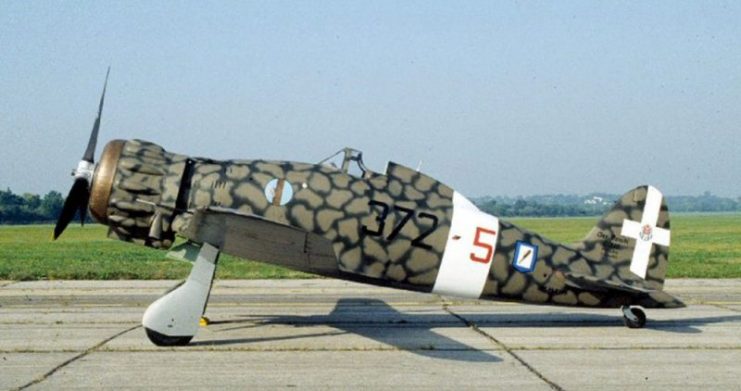
The next plane in the line, the C.202, was put on paper in the late 1930’s, and the first plane was rolled out in the late summer of 1940, as the Battle of Britain reached its height.
The most visible difference between the 202 and its Saetta predecessor was a change in the engine/cowling. It was streamlined to add speed. Being Italian in design, it also was made to simply look better.
The Italian Air Force, the “Regia Aeronautica,” had some great looking and effective camouflage patterns for their planes.
Many of the pre-war Italian fighters had been all Italian in design and production, but the team at Macchi decided that the German Daimler-Benz DB 601A engine would be the most effective for their design and what they wanted it to do.
The engine for the Italian planes was built in Italy by Alfa-Romeo under license from the German company. The DB 601A also powered later versions of the German 109 and 110 fighters.
The performance of the C.202 was a top speed of 372 mph at 18,000 feet, range of 475 miles, ceiling of 37,730 feet, and a climb rate of 3,563 feet per minute.
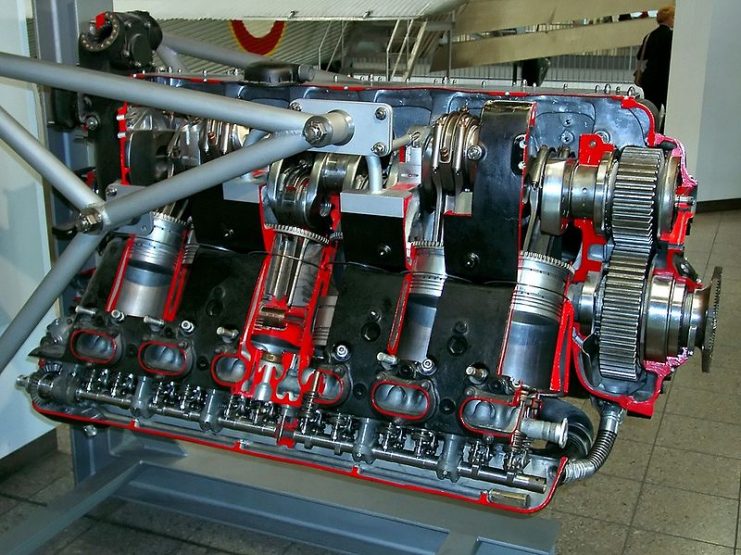
Its specifications were: 29 feet 5 inches long, wingspan of 29 feet 5 inches, and loaded weight of 6,458 lbs. The engine was a V12 that put out approximately 1,100 horsepower.
Its armament consisted of two Breda-SAFAT 12.7 mm guns in the cowling, or two 7.7 Breda-SAFAT guns in the wings. It also could carry two 110, 220, or 350 lb bombs, and two 26.4 gallon (100 liter) drop tanks.
There would be 1,150 units of the 202 built.
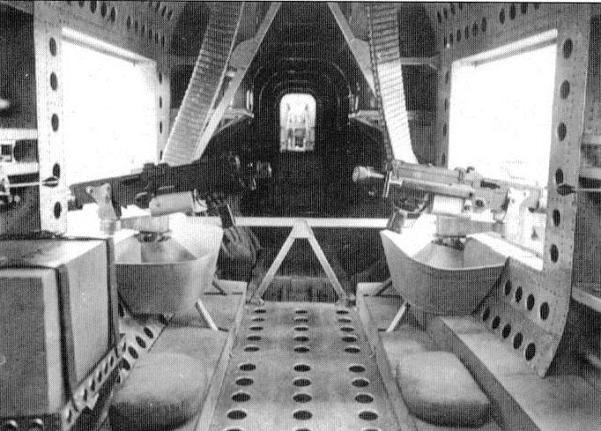
The men who met the Folgore in combat had great respect for it, though many Italian pilots thought it under-gunned. In the air war over North Africa, the Folgore held its own. In the summer of 1942, C.202’s had a greater kill/loss ratio than their Bf109 counterparts.
One unfortunate tendency of the plane’s design, however, which claimed a small number of Italian lives, was its tendency to enter into a wild spin. This would be corrected in the C.205.
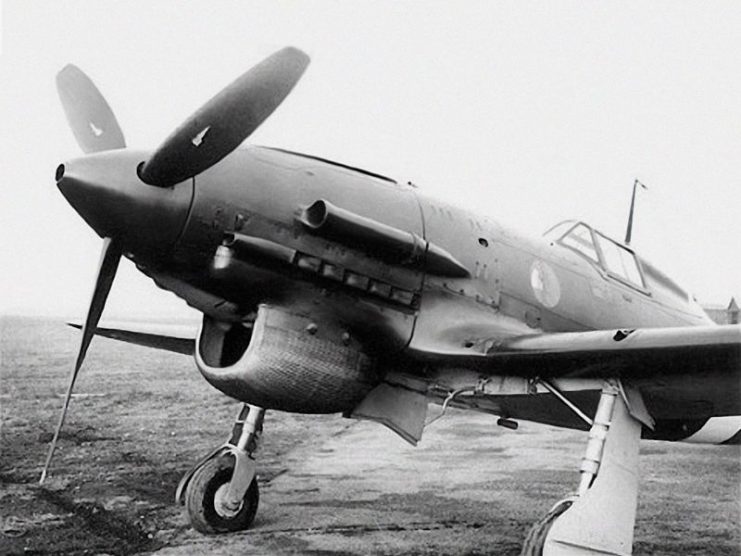
Though many British pilots at first dismissed the Italian plane and its pilots, they quickly learned that that was a mistake. The plane was more than a match for the Hawker Hurricanes, P-40 Warhawks, and the early production Spitfires that were flown by the British.
One British ace flying the P-40 over Africa said the 202 was “Sleek, supremely fast…the 202 was capable of out-turning our P-40s with ease; but the majority would pull away effortlessly into a climbing roll off or a roll off the top when things became at all hectic…. Their aircraft was superior to ours on all counts.”
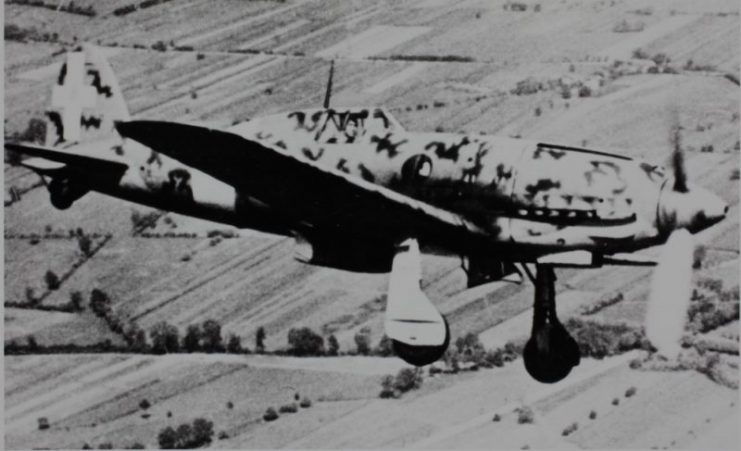
Its one drawback, again, was lack of firepower – and when the 202 was relegated to flying against bombers in the latter part of the war, its lack of firepower would make it ineffectual against the heavily armed and armored American B-17’s and 24’s that ranged over Italy.
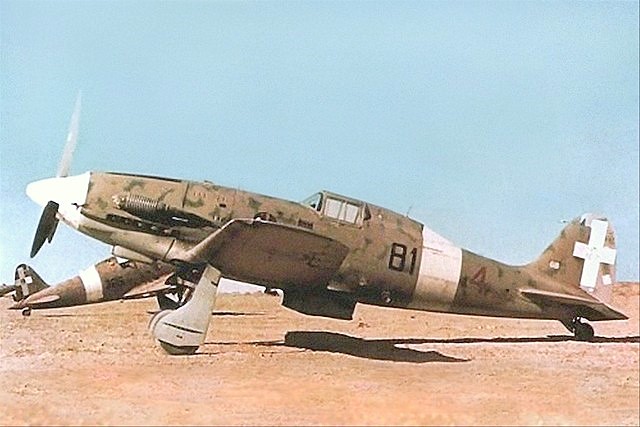
As the war progressed, the Italians, like all other combatants, set out to improve and augment their air forces. The next Italian fighter was the Macchi C.205.
The 205 housed a more powerful Alfa-Romeo built Daimler engine, the DB 605. It also added cannon to its armament and corrected the spin problem that occurred in the C.202.
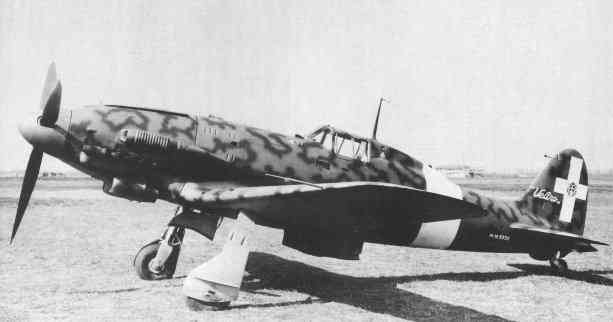
This latter problem was caused by the torque put out by the powerful engine of the 202, which was caused by a design flaw–the shorter wing sometimes could not counteract the forces of the engine, which caused the plane to want to spin to the left.
To counteract this while adding power to the newer engine, the C.205 had a slightly longer left wing than the 202. This seemed to correct the problem.
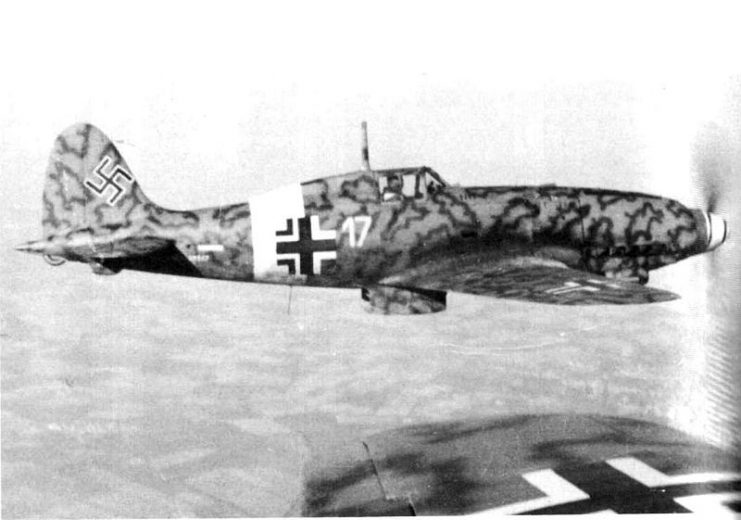
The addition of the cannons made the 205 Folgore a formidable plane, even for late production Spitfires and the American Mustang. It had a maximum speed of 400-405 mph, a 590 mile range, and a 37,730 feet ceiling.
The 205 had a number of variants, but most of them remained unbuilt prototypes as the war began to go badly for the Italians. The main 205 version was designated M.C 205V. Fortunately for the Allies, only 262 of the 205’s were built.
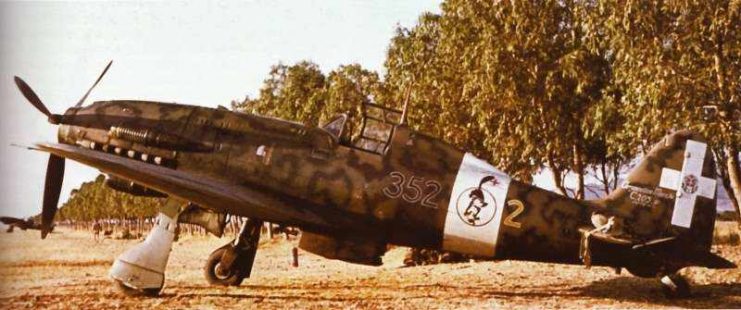
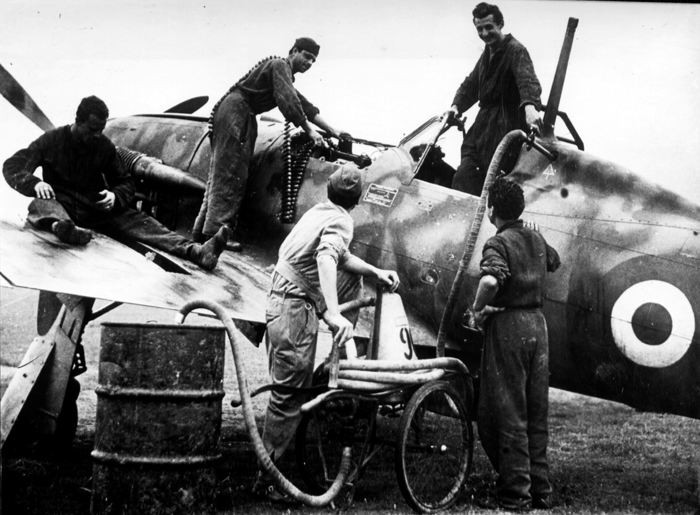
The 205’s were able to take on not only fighters such as the Spitfires of the Royal Air Force and Mustangs of the U.S. Army Air Forces, but also now had cannon that could be effective against the Allied bombers flying across the Mediterranean to bomb Italy.
A number of German pilots of Jagdgeschwader 77 fought in captured 205’s after the fall of Italy, out of preference.
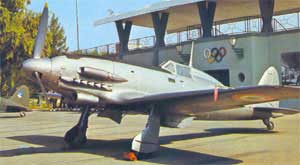
Read another story from us: The Father of Jet Planes – The German Me 262
The leading Italian aces of the war, such as Franco Lucchini (21/22 victories) and Adriano Visconti (19 victories for the Axis, 7 for the Allies) flew 202’s and 205’s.
Both planes flew for Italy after the war, and a number which had been supplied to the puppet Croatian regime during the war flew for Yugoslavia into the late 1940’s.
